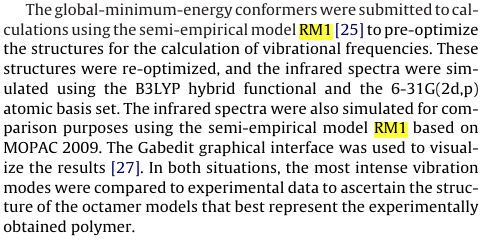Molecular modeling study on the possible polymers formed during the electropolymerization of 3-hydroxyphenylacetic acid
Authors: Deusmaque Carneiro Ferreira, Antonio Eduardo da Hora Machado, Fernanda de Souza Tiago, João Marcos Madurro, Ana Graci Brito Madurro, and Odonírio Abrahão Jr.
Publication year: 2012
Journal / Book title: Journal of Molecular Graphics and Modelling
Excerpt from the article:
Image
